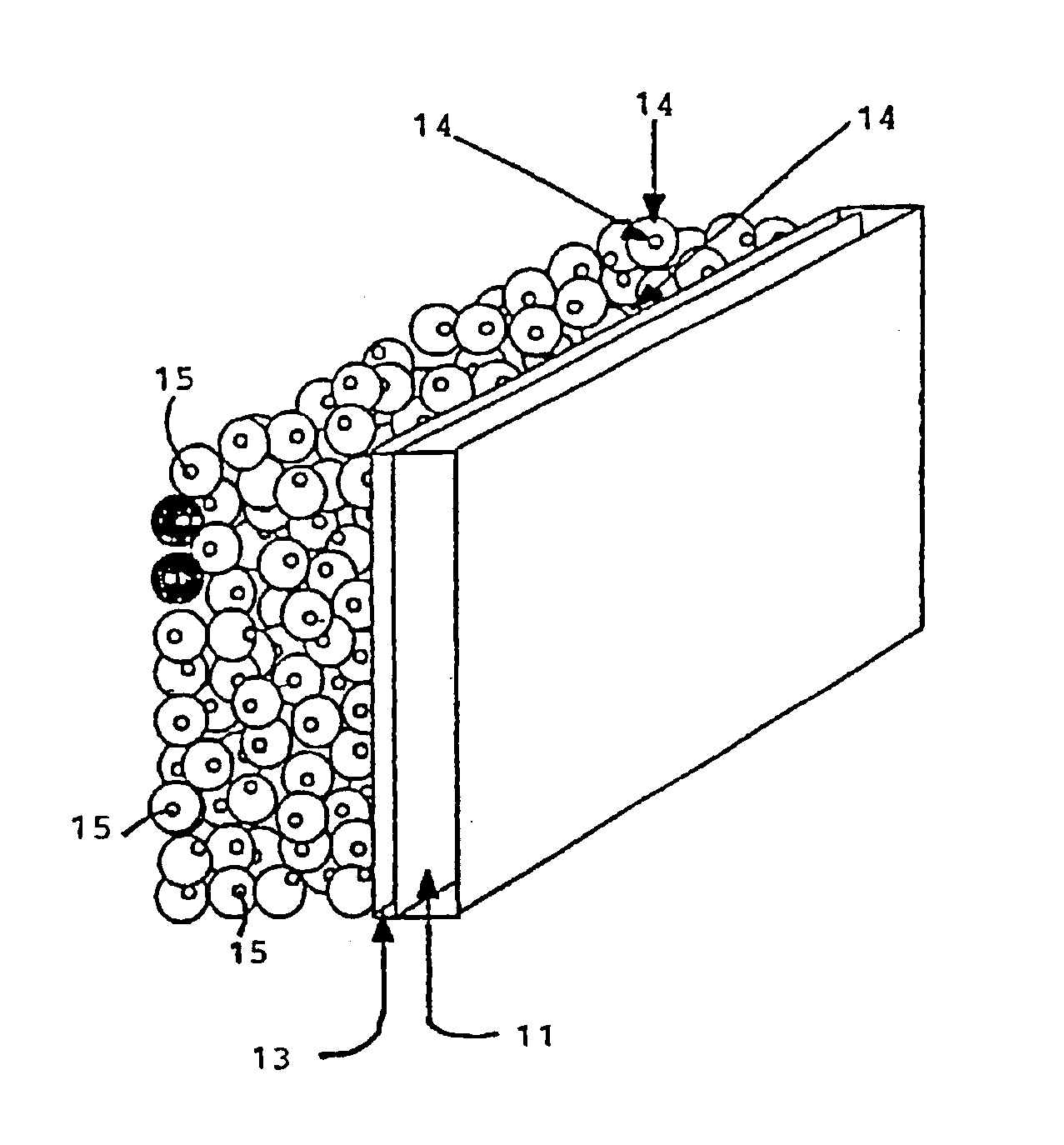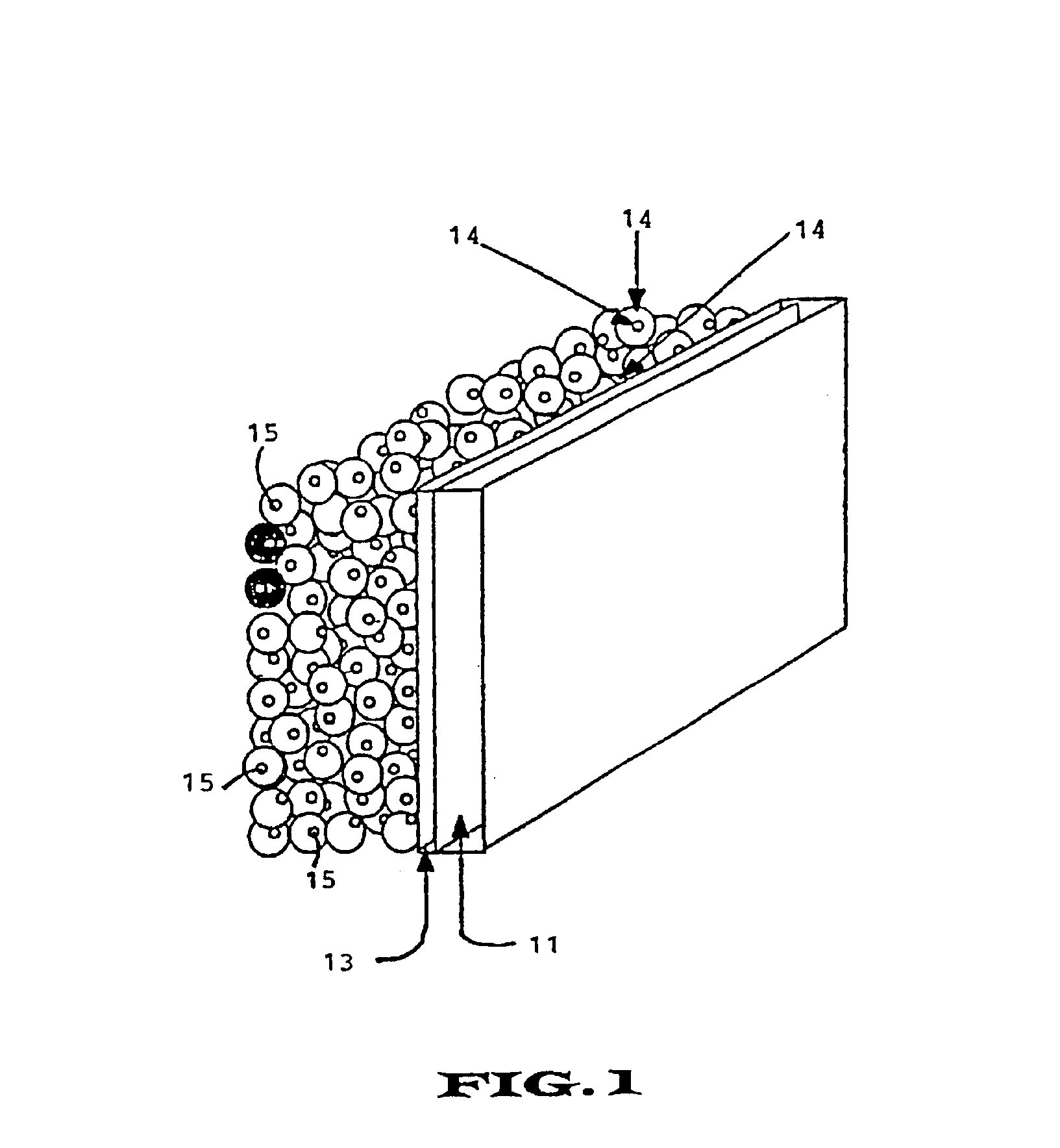Electrochromic system
- Summary
- Abstract
- Description
- Claims
- Application Information
AI Technical Summary
Benefits of technology
Problems solved by technology
Method used
Image
Examples
Embodiment Construction
The invention is illustrated in the following Example.
(a) A 2.5 cm×2.5 cm transparent nanostructured film, consisting of a 4 μm thick layer of fused TiO2 nanocrystallites, was deposited on a 3.3 cm×3.3 cm fluorine doped tin oxide on glass substrate (Glastron, Trade Mark). A colloidal TiO2 dispersion was prepared by hydrolysis of titanium tetraisopropoxide. The average diameter of the initially formed crystallites (7 nm) was increased by autoclaving at 200° C. for 12 hours to 12 nm. Concentrating the autoclaved dispersion to 160 g / l and adding Carbowax (Trade Mark) 20000 (40% wt. equiv. of TiO2) yielded a white viscous sol. (Carbowax 20000 is an ethylene glycol polymer whose average molecular weight is 20000. ) A 4 μm thick layer of the above sol was deposited using a screen printing technique on the conducting glass substrate. The resulting gel-film was dried in air for 1 h, sintered at 450° C. for 12 h and stored in a darkened vacuum desiccator prior to use.
(b) A redox chromophore,...
PUM
| Property | Measurement | Unit |
|---|---|---|
| Electrochromic | aaaaa | aaaaa |
| Semiconductor properties | aaaaa | aaaaa |
Abstract
Description
Claims
Application Information
 Login to View More
Login to View More - R&D
- Intellectual Property
- Life Sciences
- Materials
- Tech Scout
- Unparalleled Data Quality
- Higher Quality Content
- 60% Fewer Hallucinations
Browse by: Latest US Patents, China's latest patents, Technical Efficacy Thesaurus, Application Domain, Technology Topic, Popular Technical Reports.
© 2025 PatSnap. All rights reserved.Legal|Privacy policy|Modern Slavery Act Transparency Statement|Sitemap|About US| Contact US: help@patsnap.com



